
Did you know that a whopping 93.79% of businesses use social media? To put it differently, there’s fierce competition. So how can you make yourself stand out?
Through a well-crafted social media strategy.
Social media branding uses various social channels to put your company’s mission, messaging, and identity in the spotlight. This helps reach new prospects and consolidate relationships with existing followers.
This post will cover the ins and outs of branding on social media — we’ll check out what makes a brand successful on social media and see how you can use that information to see how you can leave a mark on social platforms. Let's dive in!
Social media branding - strategies & tips
1. What is social media branding?
We've heard that using social media for branding is all the rage when it comes to expanding your brand's awareness and creating stronger relationships with your audiences.
But while creating a Facebook, Instagram, or TikTok account (or whatever other platform you're thinking about), it's easy, branding in social media it's so much more than just that.
So, what exactly does branding through social media stand for?
Well, social media branding involves using social platforms to distribute content, increase brand recognition, and establish strong connections with the audience, but it does not end here. It's about offering value to your communities and helping your customers solve different problems through the products or services your brand offers.
In most cases, the content does not have a self-promotional intent but follows a user-centric approach.
But, laying the foundations of a strong social media branding strategy involves quite a bit of research and planning beforehand.
That said, before we dive into the nitty-gritty of how to use social media for branding, let’s see some of the prerequisites you need to nail down before hopping on your social accounts.
Social media branding guidelines
Establish a brand identity
A brand identity represents everything that your company stands for and the elements it uses to portray the right image to your target audience.
More specifically, your brand’s identity should comprise the following:
- Mission statement and core values: Your mission statement represents your company’s purpose, while your core values make up the beliefs that drive it toward achieving that goal.
- Brand voice: It defines how your brand communicates with its target audience—think of Wendy’s sarcasm and humor-driven posts or Rolex’s posh language.
- Brand visuals: They make up all the visual elements that define your brand and give it a unique look—logos, color palettes, choice of fonts, etc. For example, Apple’s black, white, and grey color scheme with its simplistic fonts allude to its elegant, yet minimalistic products.
- Brand personality: It combines all the elements above to give your brand a set of human characteristics. In other words, imagine your brand as it would be a living human. How would it behave? What would it wear? What are its likes and dislikes?
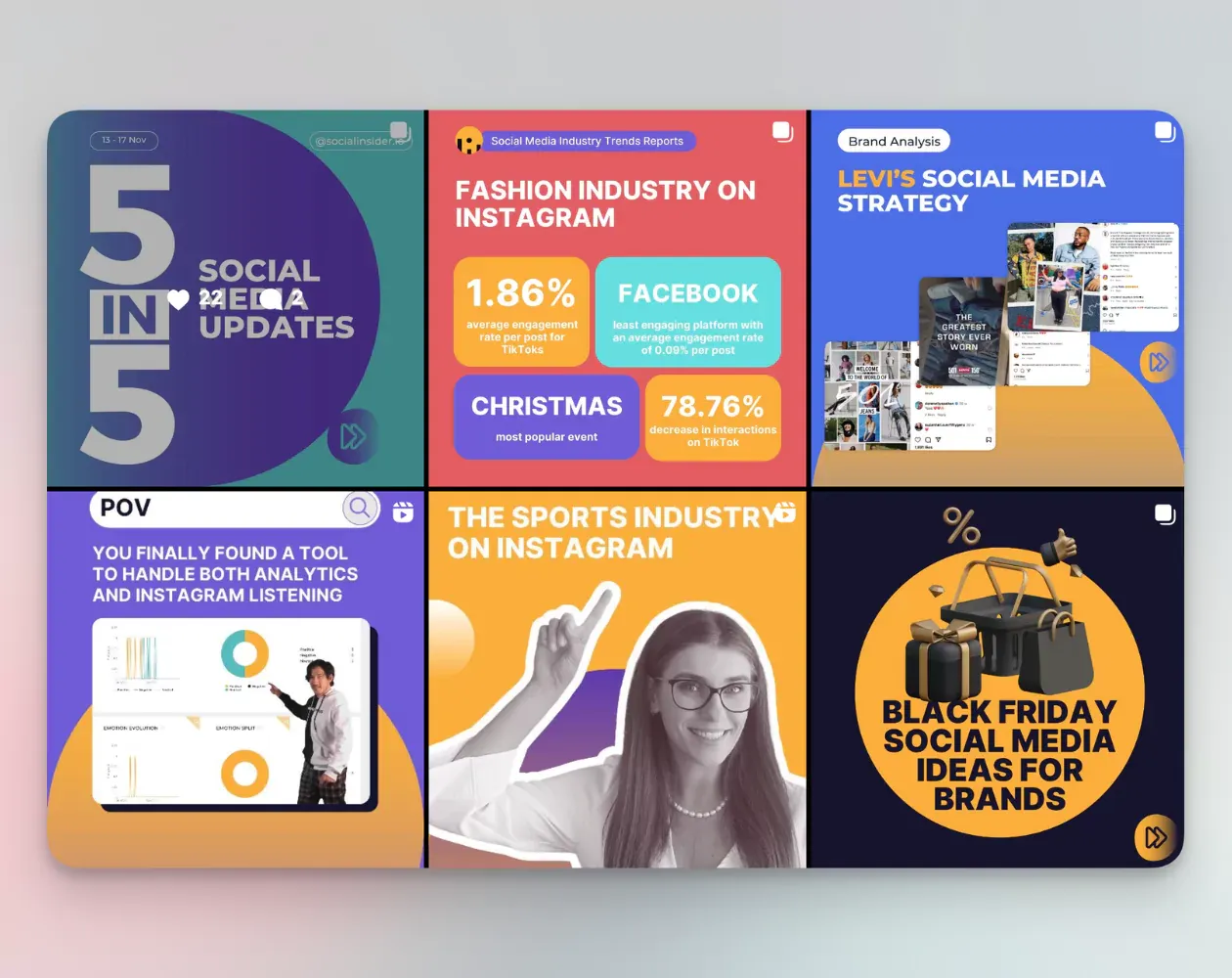
Understand your audience thoroughly
Establishing a strong connection with your follower base is a key aspect of branding on social media—it helps make your brand memorable, establish a loyal community, and spread awareness.
That said, you need to craft content that resonates with them, so knowing your audience is a must. Start with the basics.
Look into your audience’s demographics (like age, gender, country, or economic status) to get a general idea of what type of content and tone of voice would work best for them.
Then get into the details—look into their interests, needs, and pain points. This information helps you figure out what attracts their attention and makes them tick.
Pick the right social media platforms
You can’t be active on every existing social platform—you’ll most likely overwork yourself or your marketing staff while posting content on platforms your audience doesn't use will leave a hole in your wallet.
Again, take a look at your audience’s demographics to see which social media channels they may be most active on.
For instance, Facebook’s most dominant age group consists of 25 to 34-year-olds (29.9%), while Instagram is mainly made up of 18 to 24-year-olds (30.8%).
Ideally, you should pick two or three social media platforms and focus all of your efforts there.
Develop a content strategy
After you’ve sorted all of the above, it’s time to set up a content strategy. Make sure your content aligns your brand identity and values with your audience’s interests and pain points.
The type of content you post also depends on the social platforms you pick. For example, short and catchy text-based posts are ideal for Twitter, while TikTok requires short-form videos.
Given Instagram’s highly visual format and its large number of active influencers, this platform is ideal for high-quality imagery showing off your products and influencer collaboration.
2. Social media branding strategies
Humanize your brand
88% of consumers will look into a brand’s authenticity when deciding which company they like and support. Humanizing your brand is a crucial factor in terms of authenticity.
Social media is filled with businesses that continuously pump out advertisements and brag about their products—users learned to ignore them.
Check out Zendesk’s Twitter post:
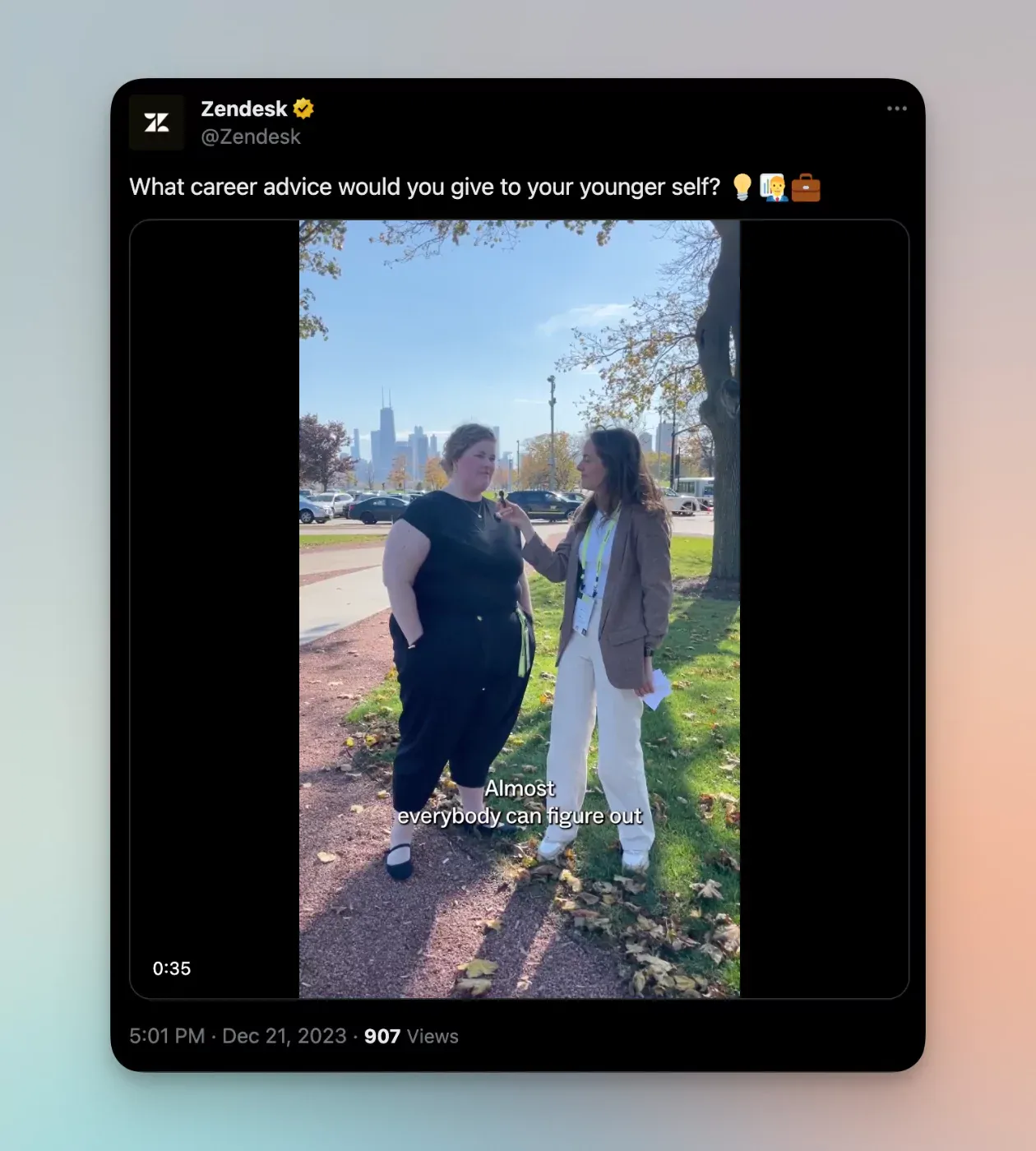
The customer service software company ditched the self-promotion posts we’re all used to and went ahead to post a series of mini-interviews asking people about career advice. The post also engages with followers by asking them the same question.
Zendesk’s user-centric post allows its followers to listen to genuinely helpful advice from everyday people, which helps humanize the brand, make it appear more authentic, and establish a personal connection with viewers.
Other brand humanization tactics for branding through social media marketing include sharing behind-the-scenes content, commenting on trending topics, and celebrating your employees (like their milestones, birthdays, and so on).
Hop on trends
Capitalizing on the latest social media trends is also an excellent way to humanize your brand, boost brand awareness, and find some common ground between you and your followers.
In fact, on TikTok, 77% of users like it when companies jump on trending topics and events or show off memes in their posts. Besides, it also helps you gain more exposure.
Keep your eyes peeled for what’s popular among your audience and use that information to craft attention-grabbing posts—just like what Airbnb did:
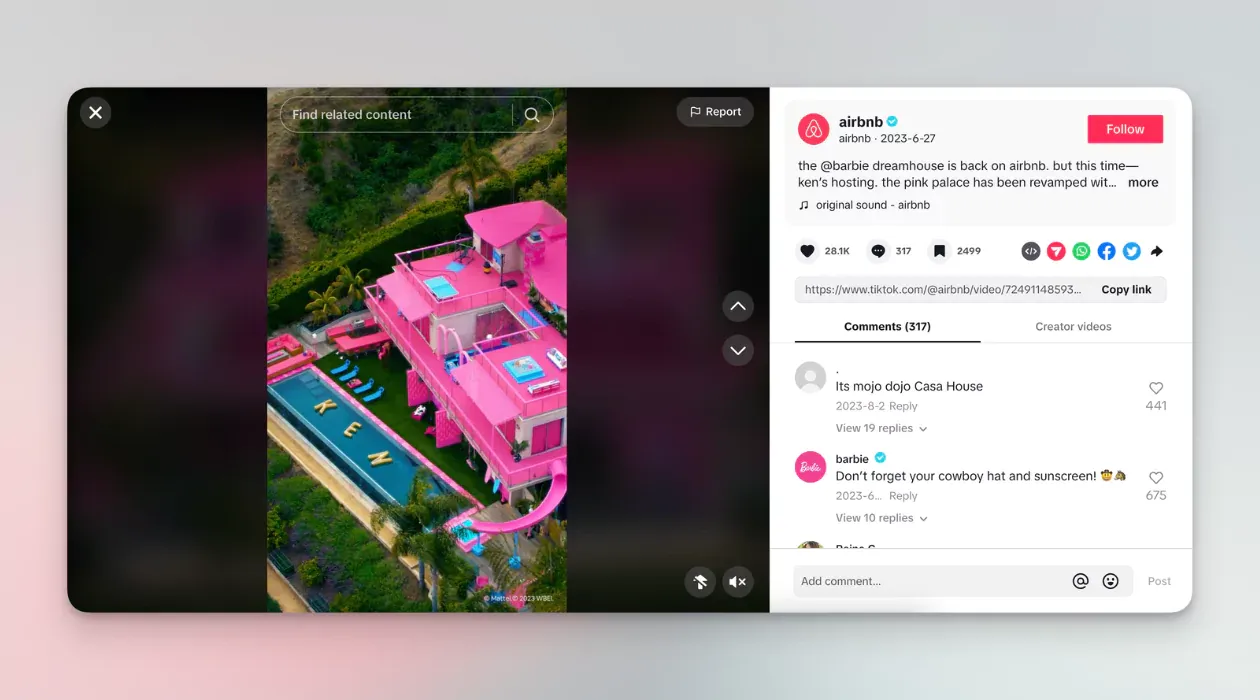
Airbnb recognized the buzz ahead of Barbie’s release and announced the re-opening of the Malibu DreamHouse. The video attracted 500,000 views, which is significantly more compared to other Airbnb posts published in the same period.
Maintain consistency in your creatives
This is one of those social media branding tips that will make your business easily stand out. Think of it like the cherry on top of a cake that makes you say "perfection".
Consistent branding across your social media channels helps reinforce your identity and become instantly recognizable in your followers’ feeds.
It also helps differentiate yourself from your competitors by clearly highlighting your brand’s stand-outs and unique personality in your audience’s eyes.

For instance, Yves Saint Laurent primarily uses a black, white, and grey color scheme while its logo is shown across most of its Instagram posts.
This theme is also present on the fashion company’s TikTok and Facebook accounts, as well as its website. As such, the company maintains a posh, opulent, and sophisticated look on all of its marketing channels.
The same idea goes for your brand’s tone of voice and values—they must remain consistent.
Again, think of your brand as a person who looks, speaks, and behaves in a particular way. If its personality constantly changes, it will likely leave a negative impression on your audience.
Consider setting up brand guidelines—a set of documents that specify your brand’s tone of voice, color palette, logo size and placement, typography, etc. This ensures that marketing teams always develop content that’s on brand.
Position yourself as a reliable brand
Social media shouldn’t be a one-way conversation that’s only about your business. 65% of consumers are more likely to recommend a brand that replies to DMs or positive comments.
Keep your eyes peeled on the comments sections of your posts, strike up conversations, and take the time to respond to your followers, especially when you receive complaints or questions.
Ignoring them will leave a negative impression on your followers—nobody wants to do business with a brand that appears to not care about its customers.
Besides, responding to comments helps followers establish a stronger connection with your business and make your brand more memorable.
Let’s have a look at how Mercedes handles negative feedback on Twitter:
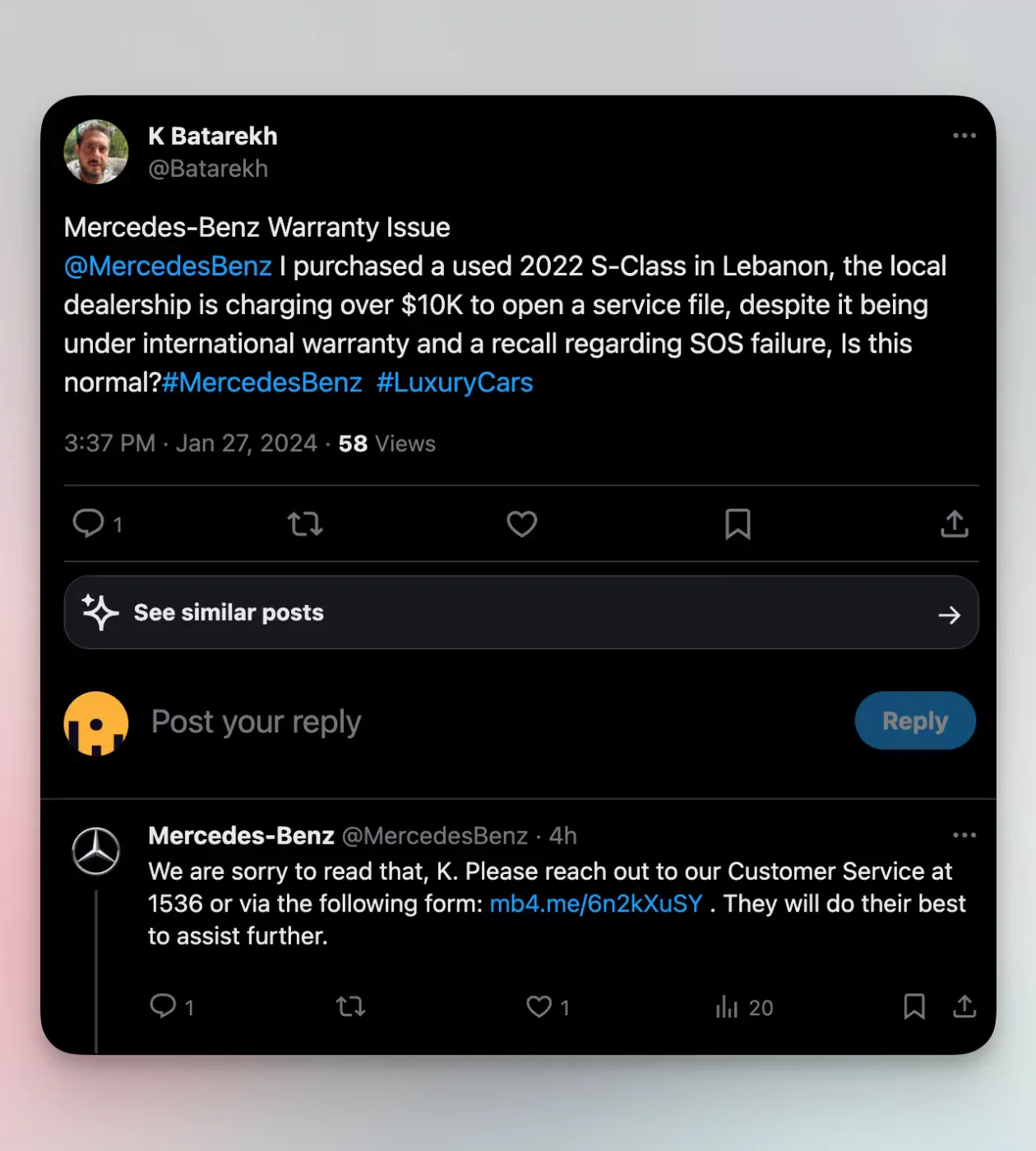
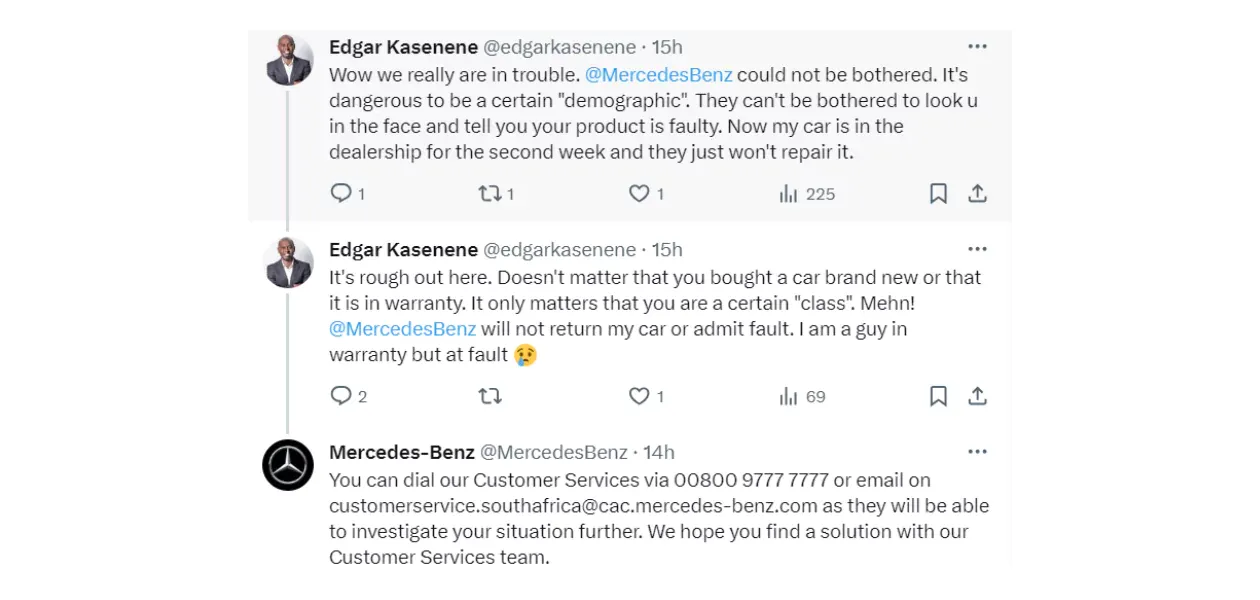
The company replied within the hour. They also made sure to include the customer service email address corresponding to the customer’s location. The commenter later thanked Mercedes for taking the time to respond.
In other words, take Mercedes’ example and do it consistently. You want your audience to see you as approachable and reliable as possible.
Your followers should be comfortable enough to reach out whenever they have any questions, knowing they’ll get a response—that’s when you earn your audience’s trust, and followers think of you as more than just a company that tries to sell products.
However, engaging with your community involves more than replying to feedback. Take the initiative, and start conversations with followers by bringing up topics of their interest.
Also, consider polling—it’s an excellent way to actively engage with your audience and uncover valuable information about their preferences, needs, wants, etc.
Moreover, slightly change your brand’s tone of voice based on the social platforms you use. As mentioned, different networks have different dominant demographics—addressing older audiences through overly playful language wouldn’t work.
Leverage influencer marketing
31% of social media users prefer to discover new products through influencers—this percentage bumps up to 43% for Gen Z audiences.
Meanwhile, 69% of consumers trust influencer recommendations over any other promotional materials coming directly from a brand. In other words, influencer marketing is excellent for social media branding since it enables you to expose your brand to new audiences and boost credibility.
So where can you find the right influencers? Instagram yields the highest ROI regarding influencer marketing, so it's best to start from there. Any influencer won’t work, though.
Make sure to identify social media personalities that fit your niche and adhere to your brand’s tone of voice. Socialinsider’s AI Instagram Listening tool can help you with just that.

For instance, here’s what we uncovered after searching the Rare Beauty branded hashtag.
We received an extensive list of relevant social media personalities showing the number of followers, interests, languages, and the total posts containing the said hashtag.
Note: This feature is also handy for analyzing your compaign's hashtags. The more people talk about your brand, the more effective your overall branding strategy is.
You can further examine your strategy’s effectiveness via the platform’s sentiment analysis tool to see what people think about your brand.
After that, we can narrow down to specific influencers and see key details like the type of content they post, their total engagement, average engagement rate per profile, and more.
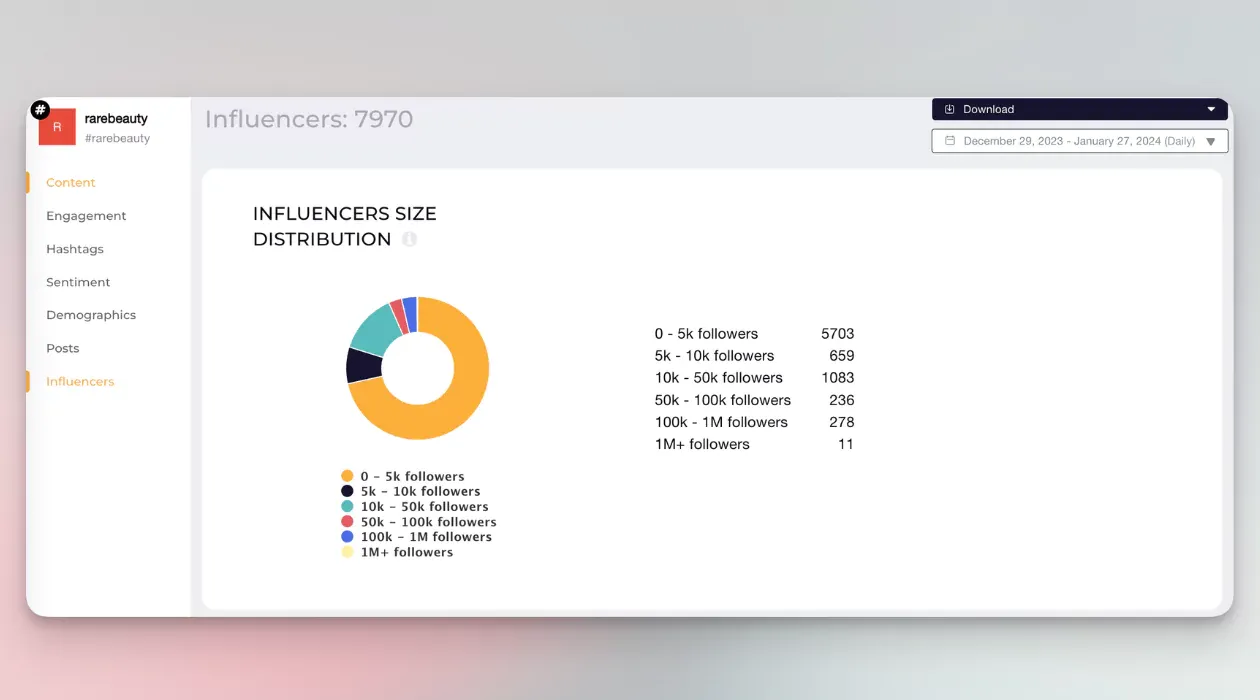
Here’s how I did it:
- Step 1: Head over to the Socialinsider dashboard and click on the Social Listening icon on the left side menu.
- Step 2: Click on the Add hashtag button at the top of the screen.
- Step 3: Type in your desired hashtag (one word only) and click on the +Add button.
- Step 4: Search for your new hashtag under the Hashtags menu on the left-hand side of the screen, then click on it.
- Step 5: Click on the Influencers button and scroll down to see the list of social media personalities.
- Step 6: Pick an influencer and press the View Details button to uncover more metrics.
Promote user-generated content
Speaking of influencers, why not turn your own followers into mini-brand ambassadors? That’s where user-generated content (UGC) comes in.
In short, this represents social media posts or blogs made by everyday consumers, rather than brands. UGC also extends to customer reviews and testimonials.
48% of marketers believe that UGC plays an important role in humanizing their marketing strategies—essential for building a strong, trustworthy social media brand. It helps you appear authentic as well as foster brand loyalty and awareness.
It’s also an excellent source of inspiration, allowing you to cut your content creation team some slack. That said, make sure to encourage your followers to post content showcasing your brand.
You can also set up contests with branded hashtags to further incentivize users and extend your reach.
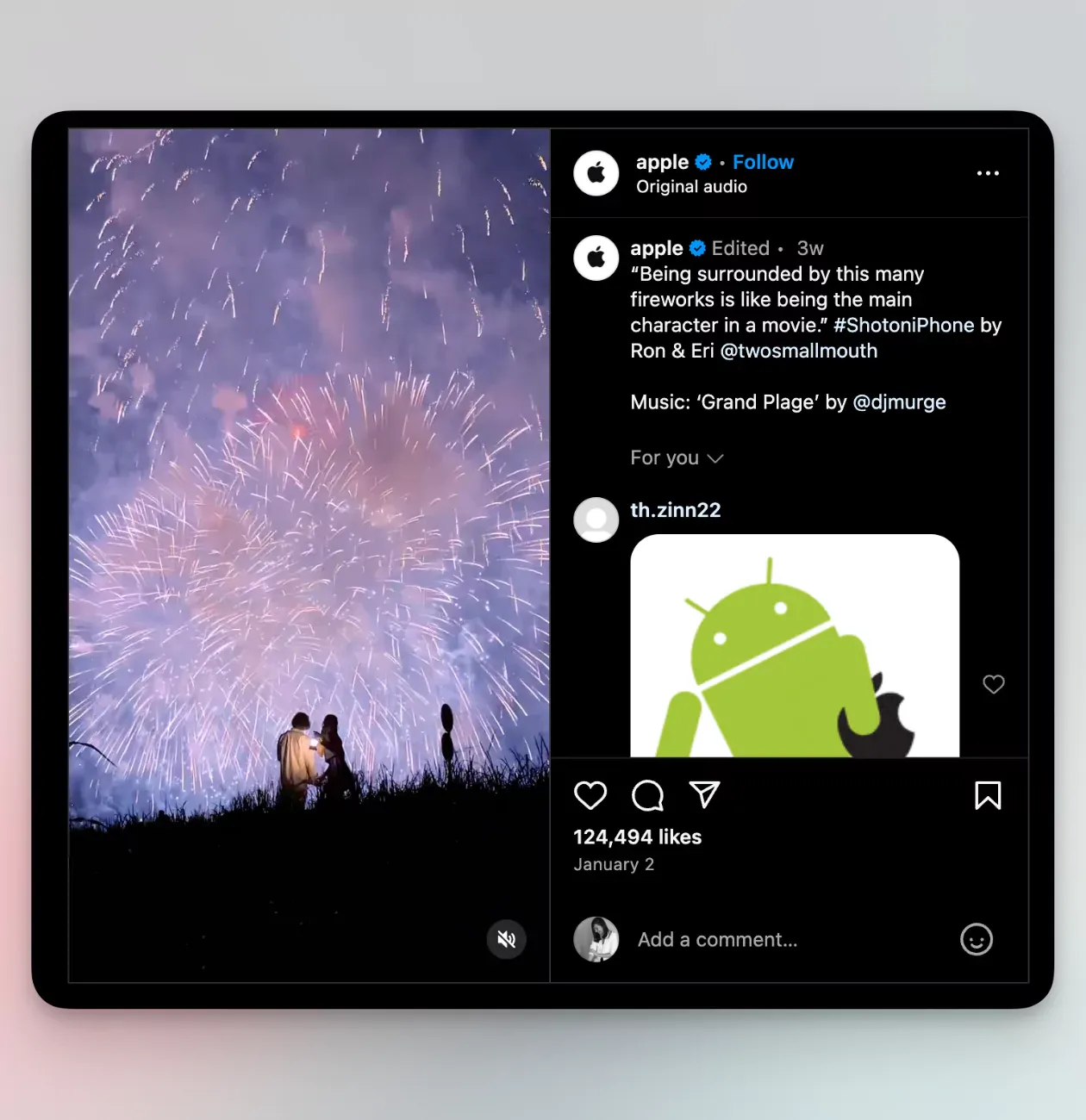
Apple’s “Shot on iPhone” campaign is an excellent example. Followers can post their iPhone photos via the branded hashtags for a chance to get featured on the company’s Instagram page.
This is perfect for encouraging followers to become an active part of the community and simultaneously show off the iPhone’s camera capabilities. A great example of social media branding done right.
Measure your results and strive for improvement
Social media branding is an ongoing process. You need to monitor your posts’ performance continuously to see whether they resonate with followers and identify what type of posts bring in the best results.
Here’s a brief rundown of the key metrics you should track:
- Engagement rate: It measures how many people interact with your posts, through likes, shares, comments, etc. High engagement rates indicate content that resonates with your audience and paves the way toward increased brand awareness.
- Audience growth: It tells you how many followers you gained within a specified amount of time. This metric is a strong indicator of social media campaign success and brand growth.
- Impressions: It gauges how many times your content was displayed in your followers’ feeds (no matter if followers clicked on the said content or not). The more impressions you have, the more visible your brand is.
- Reach: It indicates how many unique viewers see your content. A strong reach correlates to high levels of brand awareness.
You can easily monitor these metrics with Socialinsider’s cross-channel analytics platform.
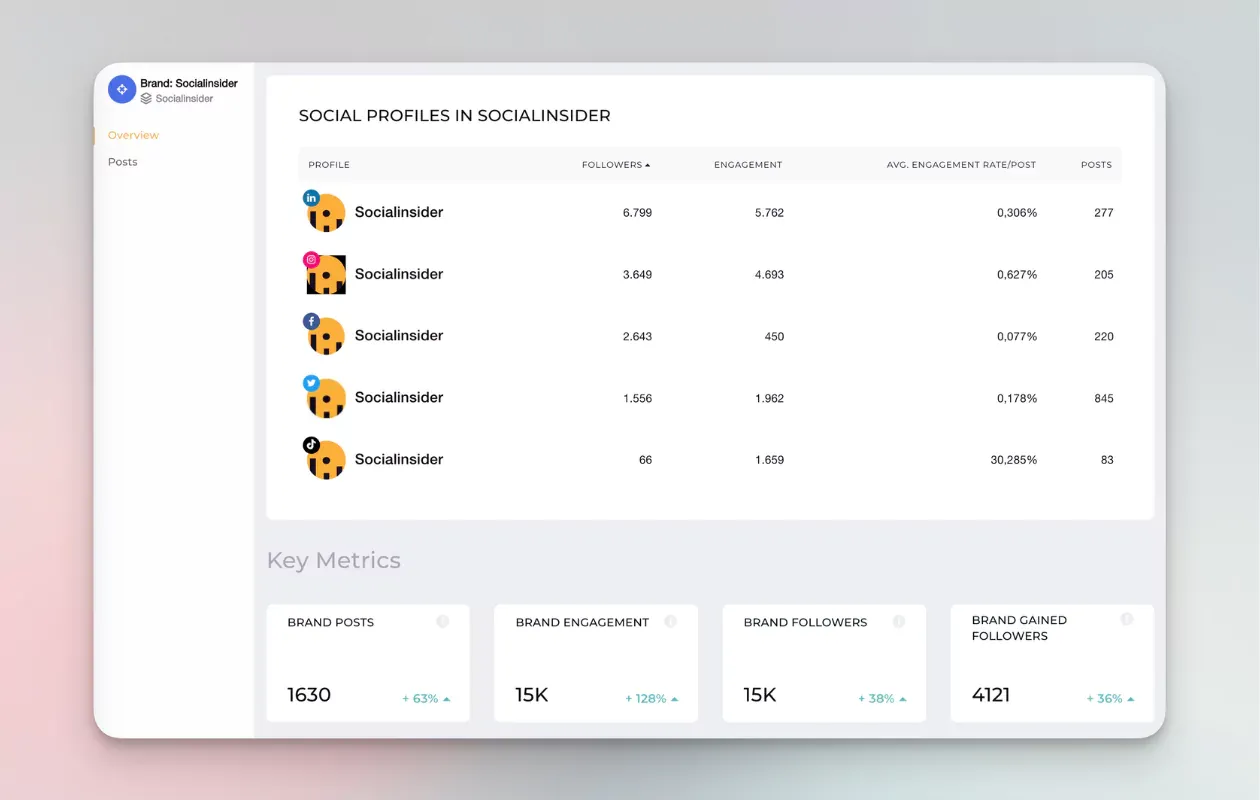
Socialinsider’s in-depth analytics allow you to track your engagement rates over time and narrow down to the type of posts that generate the most interactions (documents, images, and videos).
You can click on the graph to reveal each post’s performance, while the platform also gives you ideal posting time suggestions (by day and hour) to drive the best engagement. You can also track audience growth, reach, and impressions via easy-to-grasp graphs.
Final thoughts
Branding should be an intricate part of your social media strategy—it allows you to establish an emotional connection with your audience, earn your follower’s trust, and ultimately generate more revenue.
That said, foster a strong community and be actively involved in it. Spark conversations, leverage popular trends and encourage followers to post their own content showcasing your products/services.
FAQs About Social Media Branding
1.What is the difference between social media branding and marketing?
Social media branding involves highlighting your company’s defining characteristics—your core values, mission statement, company culture, personality, and generally the very identity of your business.
Social media marketing involves the tactics necessary to put these characteristics in front of your target audience—be it through advertising campaigns, organic posts, influencer marketing, etc.
2. What is the purpose of social media branding?
In short, a social media branding strategy aims to connect businesses with their audiences on a more personal level.
This allows companies to boost credibility, increase their brand awareness and reputation, as well as build strong active communities, and foster loyal consumer bases.
3. How to create a social media branding strategy?
Having a thorough understanding of your audience is a key factor in a successful social media branding strategy.
Make sure you understand your followers' pain points, needs, and preferences, and use that information to develop content that resonates with them. Also, prioritize engagement—interact with your audience through comments and spark open-ended conversations within your posts.
* This article was originally published here

No comments:
Post a Comment